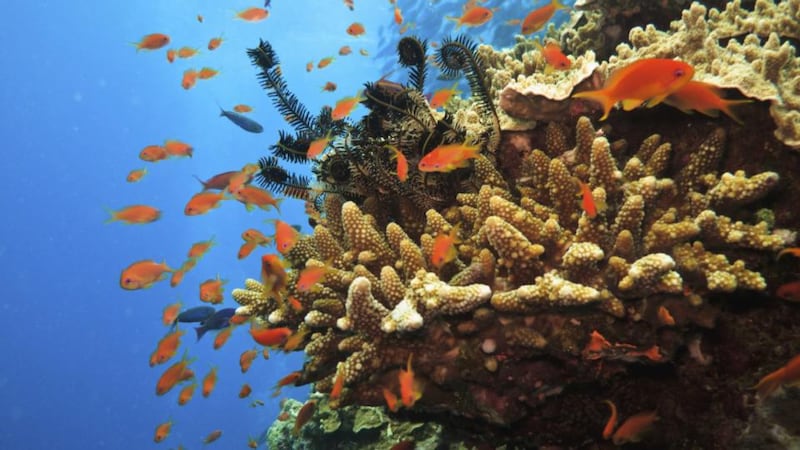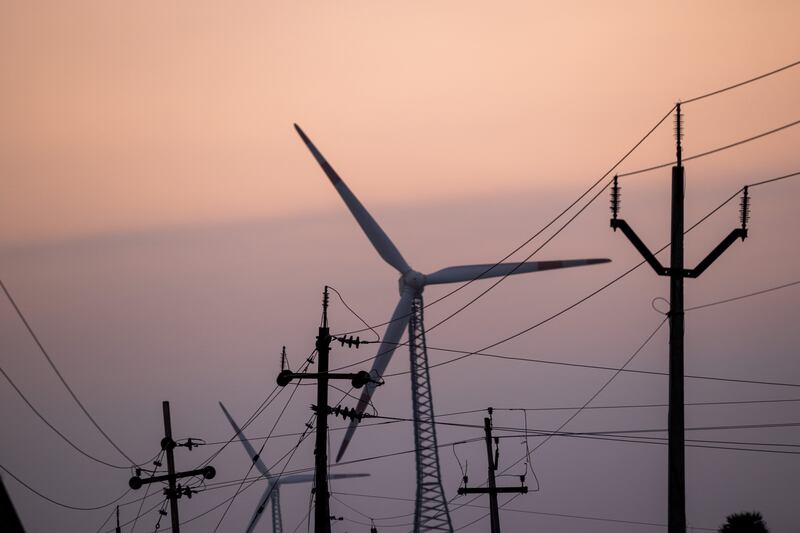This article won the Opinion and overall Student Journalist of the Year categories at the Newsbrands Ireland Press Pass Student Journalism awards last week. The writer, Grace O’Leary, is a TY student from St Aloysius College in Carrigtwohill, Cork.
Global temperatures are rising, glaciers are retreating, snow cover is decreasing. These are all true and frightening facts, but it’s not all scary. Humankind is making real change, from Ireland setting up the deposit return scheme, to the EU creating tougher penalties for illegal logging and environmental destruction.
Let’s take a look through what environmentalists have achieved in the past few years. In 2021 the Covid pandemic was raging, but even in those dark times we made some big advances in the war against climate change.

In Australia “coral IVF” helped in the restoration of the Great Barrier Reef: a spectacle to all who witnessed it, but it was under threat from marine heatwaves, pollution and coral-eating starfish. In 2020, a study showed that roughly half of the Great Barrier Reef’s corals had disappeared in the last few decades. However, in 2021 it experienced some recovery. In a process similar to in vitro fertilisation, scientists began moving eggs from areas of the reef where coral had been growing, and then transferring them to manmade pools in an effort to regenerate areas affected by bleaching or destruction by humans and storms. This process aided in the birth of a billion new coral babies. The reef is still in danger but scientists and environmentalists hope that technology like this can help bring it back to its full glory.
Actor Armie Hammer resurfaces as host of celebrity podcast
Heart-stopping Halloween terror: 13 of cinema’s greatest jump scares
Doctor Odyssey’s core message: just imagine Pacey from Dawson’s Creek holding you tight and saying, ‘Shhh, it’s okay’
Conor Niland’s The Racket nominated for William Hill Sports Book of the Year
2022 saw a spike in the use of renewable energy, which hit record levels last year. Due to the war in Ukraine, countries looked for alternatives to power their homes and businesses. When the EU hit a gas shortage following the Russian invasion, many countries ramped up the production of renewable energy infrastructure. In the second quarter of 2022, 43 per cent of the union’s energy mix came from renewables, with 19 of member states achieving record wind and solar power generation. Although it’s true that some countries returned to coal, recent data shows that the EU emissions in November reached their lowest value in the last 30 years. Europe was not alone, with both China and India, which has been largely fuelled by gas and coal, making advances towards alternative energy usage.

In 2023 there was bad climate news everywhere: it was the hottest year on record by a large margin but there was also good news. Countries and companies cracked down on methane, which traps about 84 times the heat as CO2 over a 20-year period and accounts for about a quarter of overall warming.
This year, the head of the US Environmental Protection Agency announced at the UN climate conference that it would soon require oil and gas companies to monitor their methane emissions across their pipelines, wells and facilities, and sharply reduce leakage. There was other positive related news at the UN conference as BP, Exxon and Saudi Aramco committed to cut methane pollution by at least 80 per cent by 2030. As well as that, a handful of other nations signed up to the global methane pledge and committed to cutting methane by 30 per cent by the end of this decade, while others stepped up their funding.
Even though it’s still early days in this year, we already have some good climate news such as Hawaii ending reliance on its last coal plant with a battery – yes a battery. Hawaii is showing the world that you can have a functional grid without fossil fuels, all you need is one massive battery.
Although there’s still much work to be done in the fight to save our planet from ourselves, we must remember not to get swept up in the horrible, but to look for the positive. Always recycle when you can, don’t litter and look after your part of the world – because we need to look after this planet if we want it to continue to look after us.
- Listen to our Inside Politics Podcast for the latest analysis and chat
- Sign up for push alerts and have the best news, analysis and comment delivered directly to your phone
- Find The Irish Times on WhatsApp and stay up to date




